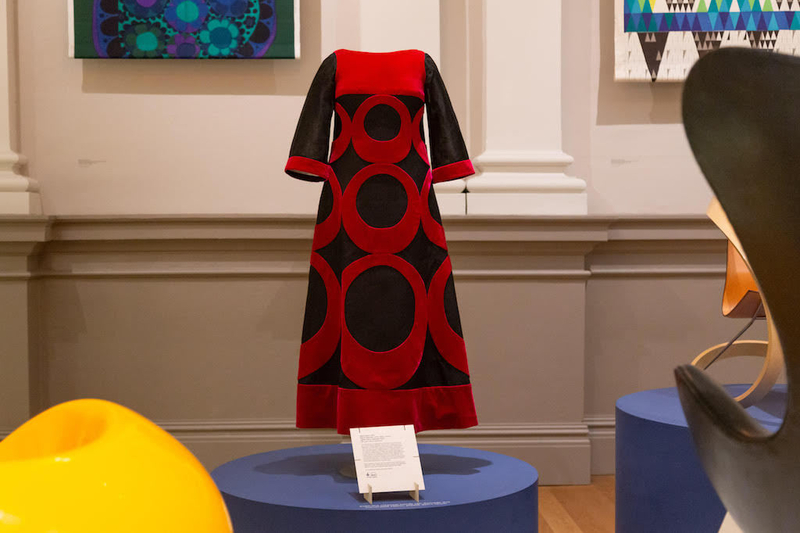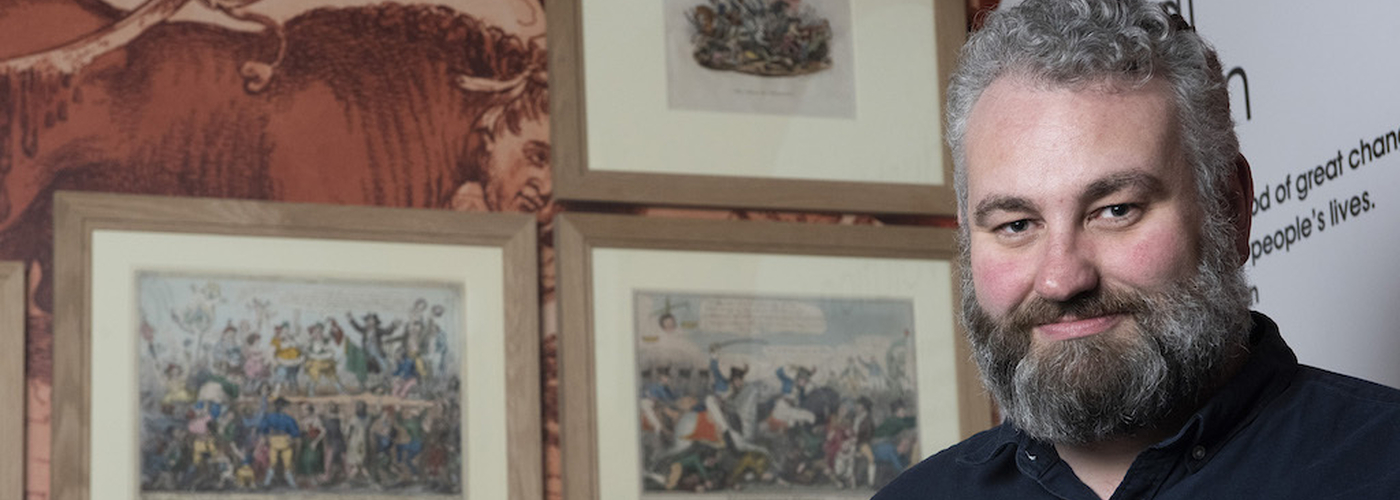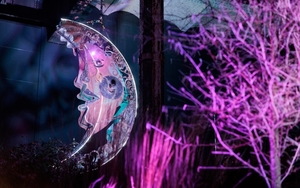From an Egyptian coffin to the earliest photo of Manchester, we asked museums region-wide to pick their favourite objects
This article was originally published in 2019 but, with museums currently closed, what better way to delve into their collections? Enjoy…
CURATORS are one of a museum’s least visible, but most important assets. From selecting to interpreting, preparing to preserving, they work with its collections like no one else. And what, after all, is a museum without a collection?
Last month, we decided to set curators across Greater Manchester the ultimate challenge - to pick their favourite object. The resulting article was a fascinating glimpse into the region’s museums, with items spanning self-pouring teapots to Harrier jets.
In fact, we found it so fascinating we decided to do a second part; and uncovered an equally diverse range of objects, from Sylvia Pankhurst’s typewriter to a silk velvet maxi dress from Pierre Balmain. We even discovered that Oldham is the birthplace of fish and chips…
Museum of Wigan Life - 18th Dynasty gilded coffin face
One of my favourite objects in the collection is an Egyptian gilded coffin face, which dates from the early eighteenth Dynasty (1550-1292 BC), the same era as Tutankhamun and Queen Nefertiti. Covered in fine gold leaf, the eyes are inlaid with copper and made from polished obsidian (volcanic glass) and crystalline. We believe it to be from a female tomb and the quality of the mask implies it would have been a person of high standing and possibly minor royalty. One of the 38 Egyptian items in the museum, this belonged to Sir John Scott, the judicial advisor to the Khedive in the 1890s. It was left to Wigan Library for the local people by his son, Sir Leslie Scott in 1924. Featured on BBC’s Immortal Egypt with Professor Joann Fletcher, this mask may be only one of five known types of this kind in the world and we are very proud to be able to display this here in Wigan.
Louisa Attaheri, Lead officer (Museums)
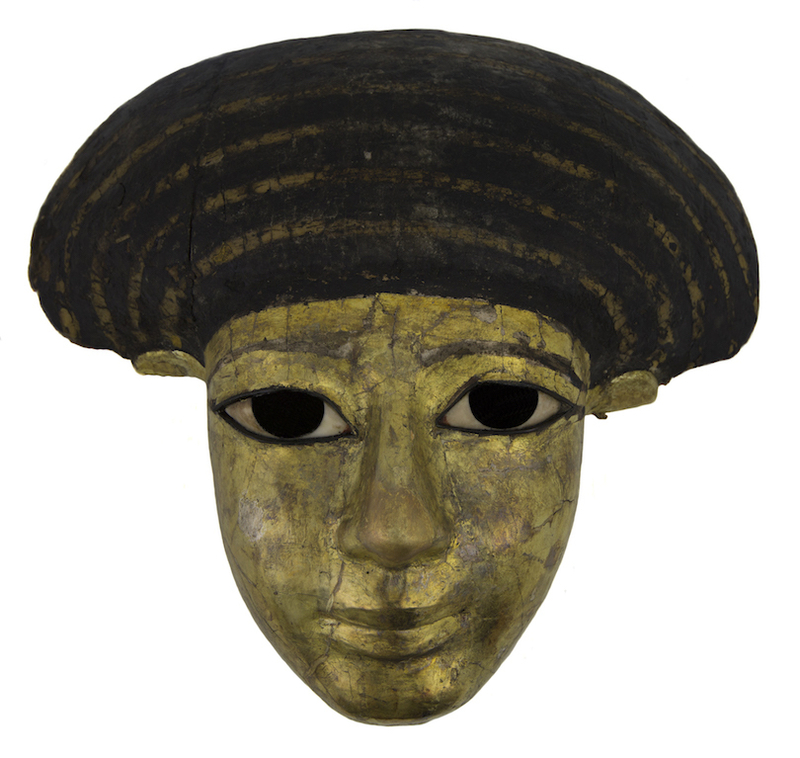
People’s History Museum - Universal Suffrage or the Scum Uppermost
This typically bold George Cruikshank creation depicts a multi-headed beast perched atop a smoking mound, made up of the discarded symbols of royalty, religion and the arts. The many-headed monster balances a cap of liberty on its tail; an emblem of the French Revolution. Beyond its visual invention and assured draughtsmanship, the print also offers us a window into the attitudes that would directly fuel the events of the Peterloo Massacre on 16 August 1819 in Manchester. It was commissioned just one month before, by influential London print shop owner George Humphrey - whose customers were mainly wealthy men, worried about a working class revolt - and is clearly against reform. It’s likely financial reasons, not his beliefs, that motivated Cruikshank to accept such commissions as he also produced many anti-establishment works during the same period.
Mark Wilson, Exhibitions officer
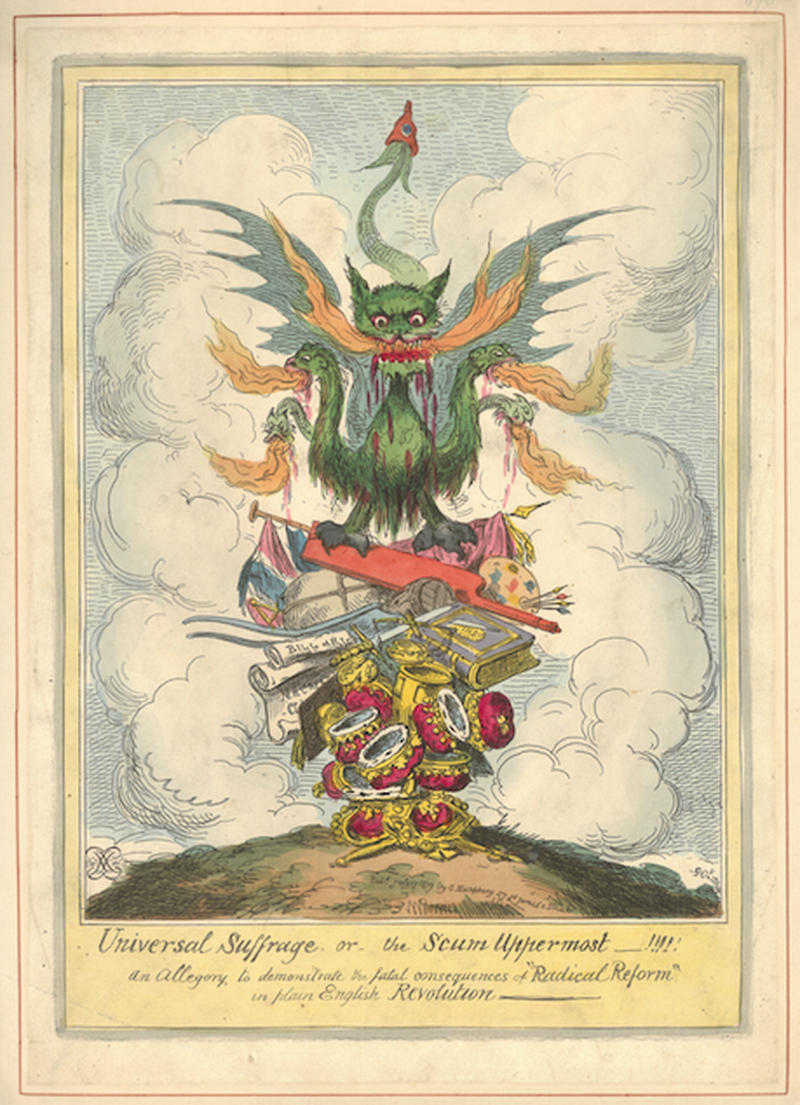
The Pankhurst Centre - Sylvia Pankhurst’s typewriter
Sylvia was a young woman when she moved into 62 Nelson Street with her mother Emmeline, her sisters Christabel and Adela, and her younger brother Harry in 1898. Although the Pankhurst family and their fight for ‘Votes for Women’ is now well known, this wasn’t the case then. It was three decades later that Sylvia used this typewriter to write her 1931 debut The Suffragette Movement; An Intimate Account of Persons and Ideals - published just after the passing of the Equal Franchise Act, which finally gave women the vote on the same terms with men. There is something satisfyingly subversive about the fact that Sylvia used the typewriter to write the history of the movement that so shook the political establishment in a period when it was becoming associated with pools of female secretaries typing up the correspondence of their male employers.
Dr Tessa Chynoweth, Curator and programme manager
The Whitworth (Paintings collection) - Galatea
As a conservator I view paintings in different ways. On the one hand there is the emotional, subjective experience of a work of art, and on the other there is the material and scientific side to paintings that conservators are in a unique position to explore. These are connected for me in Galatea by British artist Gillian Ayres (1981-2). The painting constantly attracts my attention and immerses me in both viewpoints. Ayres has produced an oil painting with thick applications of paint that draws you into the topography of the swirling paint surface. The colours are seen to exist in layered pools, only to be swept away into violent rivers that force the bright colour in to lines and shape, forming new tones and rising into mountains which seem to barely balance on the canvas. Oil paint can be used to build translucent glazes, producing the luminous flesh tones seen in Venetian and Flemish paintings, yet can also be thick and sculptural, as seen in Galatea.
Michael Bowes, Conservator (paintings)
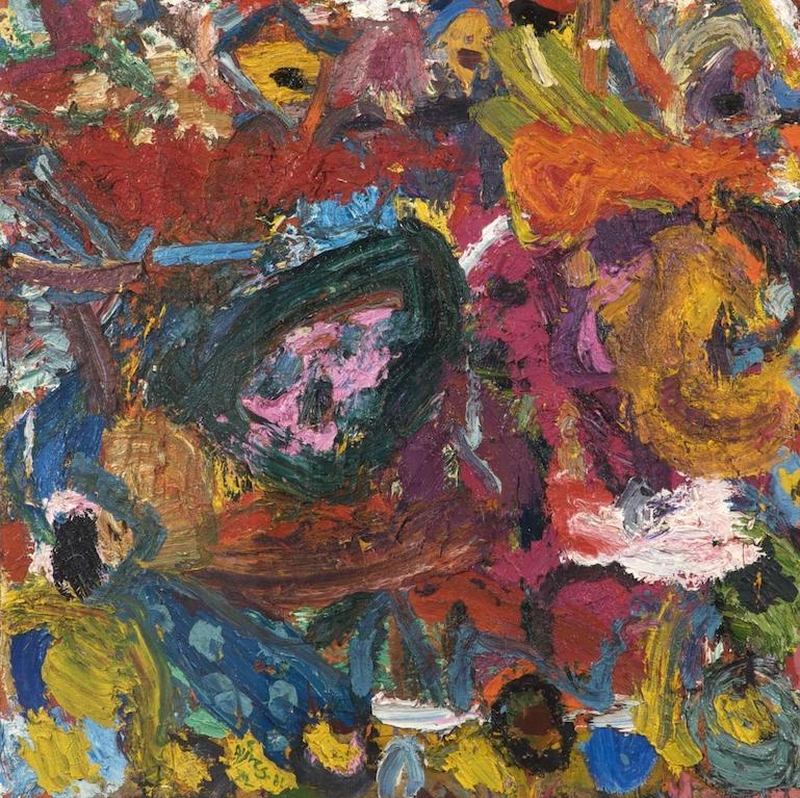
National Football Museum - Hackney Women’s pennant
This Hackney WFC pennant from 1992 is my favourite object because of the way in which I discovered it and what it represents. It was tucked away amongst many other pennants and the image on the front intrigued me. After doing a little research, I found out that Hackney Women’s FC were the first openly gay women’s football team in England founded in 1986. I love the fact that the two women on the front are embracing; it shows how inclusive women’s football can be. We have since been in touch with the club to learn more about their history, and have included the pennant as part of our new displays.
Belinda Scarlett, Collections officer

Museum of Science & Industry - Earliest known photograph of Manchester
This is the earliest known photograph of Manchester, taken just three years after the first form of photography was unveiled by Louis Daguerre (who shares both my name and birthday!) It was taken by John Benjamin Dancer - famous Manchester scientific instrument maker and inventor of micro-photographs - and is actually on a metal plate. This form of photography didn’t make negatives, which means this is the only version of this photograph, ever. What I really love though is when I’ve shown this image to visitors (in a facsimile) who know Manchester, it really gets them reflecting and sharing how the city has changed since this photograph was taken and even during their own lives.
Lewis Pollard, Associate curator

Gallery Oldham - The Adoration of the Chip
Designed and made by Ed Hall for Jeremy Deller's 2009 Procession, part of the first Manchester International Festival, this colourful banner was inspired by one of Oldham's greatest claims to fame; that the first place in the world to sell fried potatoes alongside fried fish was a stall on Oldham’s Tommyfield Market circa 1860. Oldham being the birthplace of fish and chips is contested history, but there’s some good circumstantial evidence to back up the story. The world’s oldest fish and chip shop is in nearby Mossley and was supposedly set up by a man who saw the popularity of the fish and chip stall at Tommyfield. By the 1870s, chip ranges were being produced by several Oldham firms - and by 1900 the town could boast one chippy for every 400 residents. Today, to silence any doubters, there is even a blue plaque at Tommyfield Market marking this event.
Sean Baggaley, Senior curator
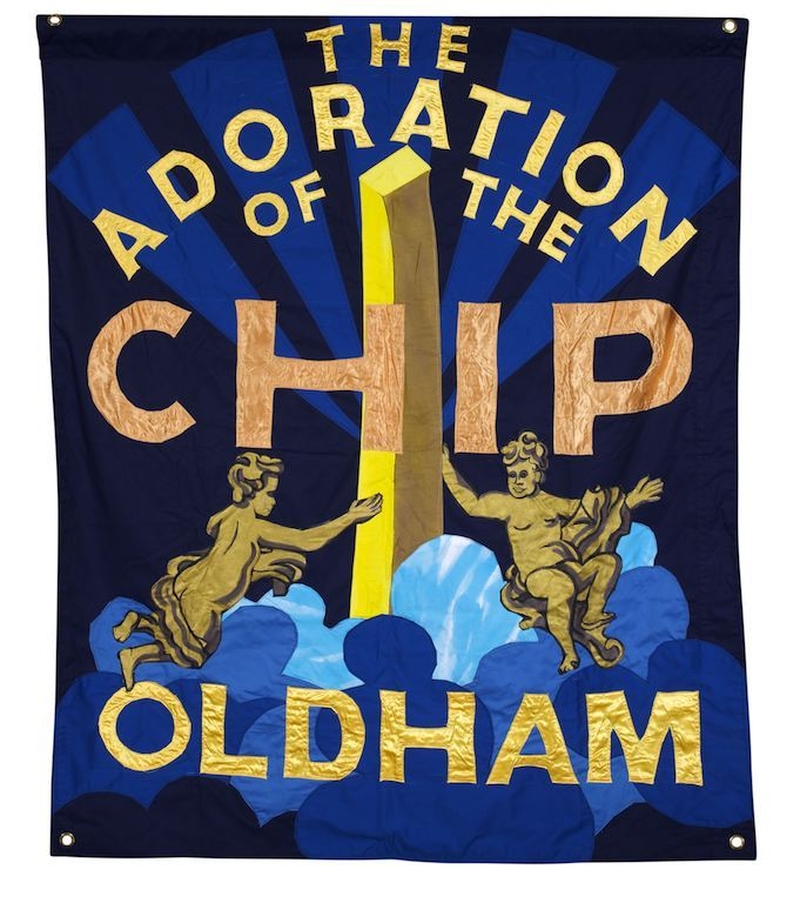
Touchstones Rochdale - Peterloo banner
On 16 August 1819 there was a meeting for parliamentary reform at St Peter's Field in Manchester - attended by 60,000 men, women and children from across the North West who wanted more rights for themselves. This banner was carried by a group from Middleton and Rochdale, led by Sam Bamford, to what was planned as a peaceful demonstration. But on the orders of a senior magistrate, Reverend William Hay, the attending cavalry drew their sabres to disperse the crowd; causing the deaths of 14 demonstrators in the panic, and serious injury to around 700 more. The demonstration has been known ever since as the Peterloo Massacre. This blue silk banner, inscribed with ‘Unity and Strength 1819’ on one side and ‘Liberty and Fraternity’ on the other, is the only surviving banner from Peterloo so it is an incredibly important object.
Sarah Hodgkinson, Curator and collections manager
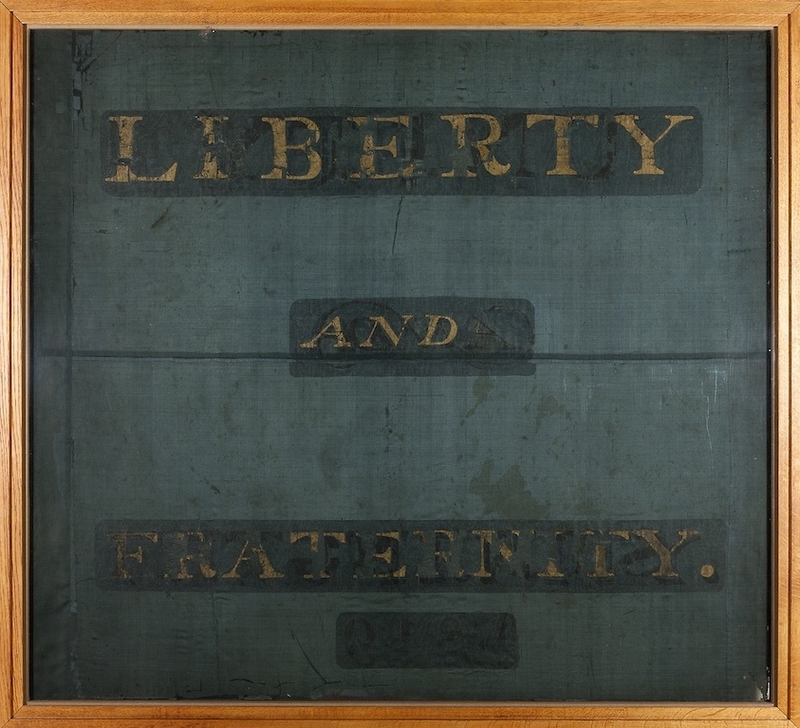
Manchester Art Gallery (Costume) - Silk velvet maxi
I love this dress because it has wonderful presence. The statuesque silhouette and modernist op-art appliqué in cerise velvet against black silk brings a sense of theatre. Created by the renowned French fashion designer, Pierre Balmain, it captures the modernity of the 1960s and chimes with the bold patterns and simple shapes explored in Scandinavian fashion and textile design of the same era. Interestingly, Balmain’s approach to design was greatly influenced by his first assistant, Danish designer Eric Mortensen, who began working for the fashion house in 1951 and was successor after Balmain’s death in 1982. Mortensen lead with creativity and vision, remaining head designer until 1990 and producing a total of 17 collections.
Rosie Gnatiuk, Assistant curator
